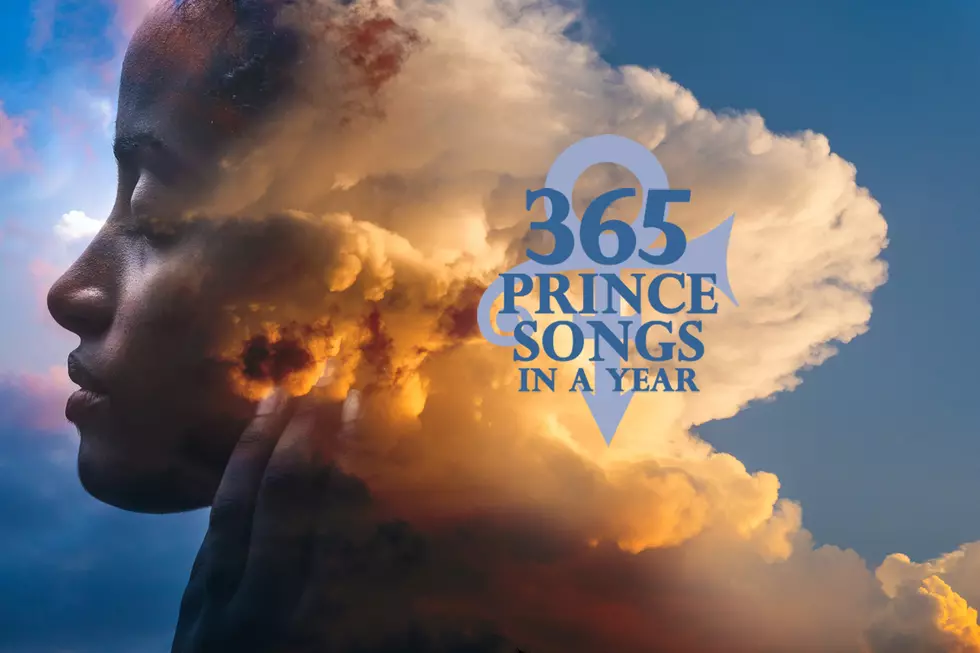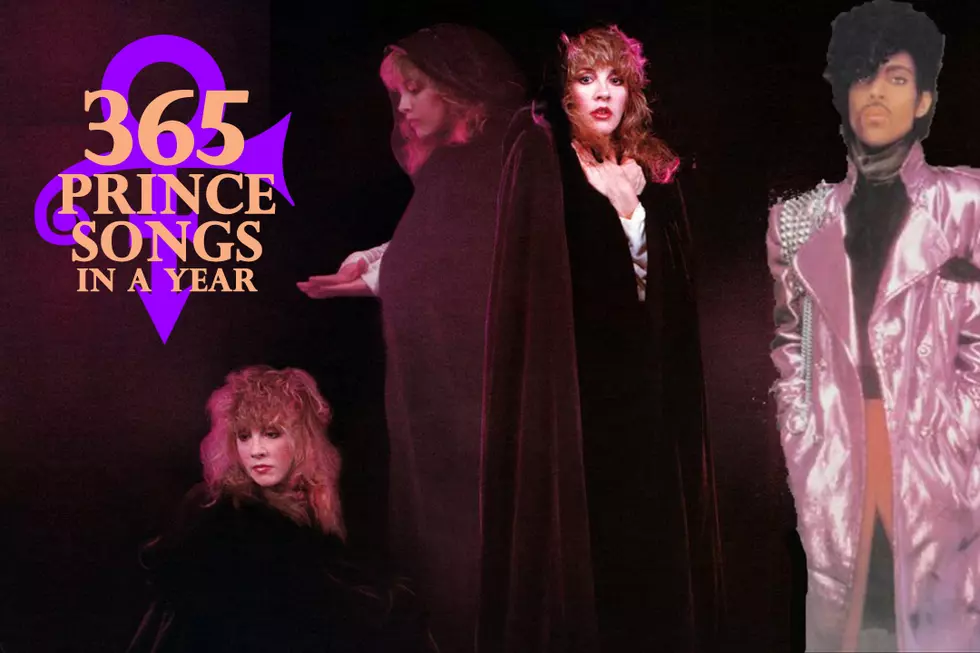
Person, Place or Thing? Three ‘Dream Factory’ Theories: 365 Prince Songs in a Year
To celebrate the incredibly prolific, influential and diverse body of work left behind by Prince, we will be exploring a different song of his each day for an entire year with the series 365 Prince Songs in a Year.
“Dream Factory” was a long-treasured song from 1985 that finally made its way onto an official release with 1998’s vault-clearing Crystal Ball set. Today, the song remains a central figure in one of the most fascinating legs of Prince’s career, the gap between Parade (1986) and Sign O' the Times (1987). The latter album was released as a two-disc set, but was rumored to have been conceived as first a two-disc collection entitled Dream Factory and then a three-disc behemoth named Crystal Ball (which has almost nothing in common with the eventual release) that Warner Bros. rejected, setting into motion Prince’s dissatisfaction with the label and the music industry at large.
“When people ask what was on Dream Factory, I tell them ‘I’ve no idea what you’re talking about,’” said Revolution keyboardist Lisa Coleman in Matt Thorne’s book, Prince: The Man and His Music. “I know there was a song called ‘Dream Factory’, but was there an album? I know it got as far as having a cover, drawn by Susannah Melvoin who was sharing Prince’s bed and studio at the time.”
After the success of Parade, fans were clamoring for a fifth album by Prince and the Revolution. “That project was Dream Factory, the culmination of Prince’s recent embrace of the spirit of collaboration,” said author Jason Draper in the book, Prince Life & Times, “The tentative sessions during 1984-85 from which Prince picked up rock, pop and jazz influences from his band mates here reached their natural conclusion, with the band hitting creative peaks all the time.”
As solid as the Revolution appeared to be on stage, cracks in the foundation were starting to form. “Having expanded the live line-up of the Revolution to a point where some felt the chemistry was ruined, Prince seemed to be using these sessions to assuage tensions within the group.” Prince gave Wendy & Lisa studio time to work on tracks earmarked for the album, including the unreleased gem “Witness 4 the Prosecution”.
By the end of 1986, the Revolution fell apart, as did the Dream Factory album. Other incarnations of the album were titled Crystal Ball (no relation to the 1998 set) and Camille (credited to Prince’s sped-up alter ego).
As for what the title track was about, that remains shrouded in mystery.
Theory No. 1: “Dream Factory” is about a person.
“’Dream Factory’ is a straightforward revenge song, Prince’s equivalent of Bob Dylan’s ‘Positively Fourth Street,’��� says Thorne in his book. “Per Nilsen (author of dancemusicsexromance: Prince - The First Decade) and his associates identify this person as the Family’s Paul Petersen, who had aroused Prince’s anger by walking out on his project in search of a solo career,”
That theory is borne out by Prince in the liner notes for Crystal Ball, when he wrote, “'Dream Factory' - written 4 a turn coat, who after a quick brush with success, lost themselves in a haze of wine, women and pills… or so the fiction goes? This person is not Prince – ‘Listen 2 the story of a man (eye) am not.'”
Theory No. 2: “Dream Factory” is about a place.
In the song, Prince (as Camille) says “Holly Rock ain't all it seems (Lord) / Don't get 2 serious, it's just a dream.” Prince also used the name in the song “Holly Rock," given to Sheila E. on the Krush Groove soundtrack. Neither that movie, or Prince’s follow-up to the blockbuster Purple Rain, were huge hits, leaving a sour taste in Prince’s mouth. “Coming off the flop Under the Cherry Moon, the song could also have been a note-to-self about the importance of keeping Hollywood at a distance,” said Draper.
"I don't regret anything about Under the Cherry Moon," Prince told Rolling Stone in 1990. "I learned that I can't direct what I didn't write." At the time, Prince was tempering his expectations for the quasi-Purple Rain sequel Graffiti Bridge. "I can't please everybody. I didn't want to make Die Hard 4. But I'm also not looking to be Francis Ford Coppola. Some might not get it. But people also said Purple Rain was un-releasable. And now I drive to work each morning to my own big studio."
Theory No. 3: “Dream Factory” is about a thing.
In many ways, the song references Paisley Park, the club, studio and performance space Prince was building at the time in Chanhassen, Minn.. The studio side, which was available to artists within and beyond the confines of Paisley Park Records to bring their music to life, in many ways was the very definition of a dream factory.
“The song makes the Dream Factory of the title (which Susannah also described as a building rather than merely a description of Hollywood) sound like a nightclub,” said Thorne, a concept bolstered by its opening, in which Wendy and Lisa play girls who are trying to get past the bouncer and into a club. Up until the week Prince died, Paisley Park hosted dance parties that often included appearances by Prince.
In the Rolling Stone interview, some five years after Dream Factory’s creation, Prince’s dream of having his own film studio was finally a reality. He shot much of the concert movie Sign O’ the Times there and was currently editing Graffiti Bridge. "People are going, 'Oh, this is Prince's big gamble’. What gamble? I made a $7 million movie with somebody else's money, and I'm sitting here finishing it."
Rolling Stone noted, “The Seven Corners set, raised on the Paisley Park sound stage, resembles the kind of backdrop used in Gene Kelly musicals. ‘Yeah, cheap!’ says Prince with a laugh. ‘Actually, that's okay. It's like how we did Dirty Mind. But man, what I could do with a $25 million budget. I'll need a big success to get that, but I'll get it, I will get it.’”
Graffiti Bridge’s lack of success put an end to Prince’s film career, but he still used the facility to produce a wide variety of film and video work. Some, like 3 Chains O' Gold, Diamonds and Pearls Video Collection and The Undertaker, were released as longform home videos. Other projects, according to the people who worked on them, remain fully produced and in the Vault.
“Everybody got big dreams (Hey baby),” Prince sang, “But nobody got the bucks.”
In his chapter on the Dream Factory, Draper says, “At one point, (Prince) even reportedly considered turning the project into a musical about the trappings of fame. The squelchy funk of the title track on which Prince renames Hollywood ‘Holly Rock’ and describes fame as a dream factory, designed to keep you unaware of reality.”
More From Diffuser.fm









